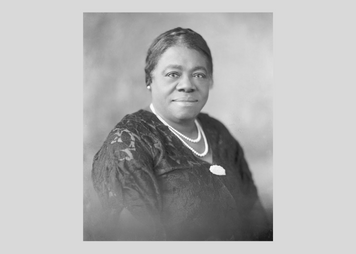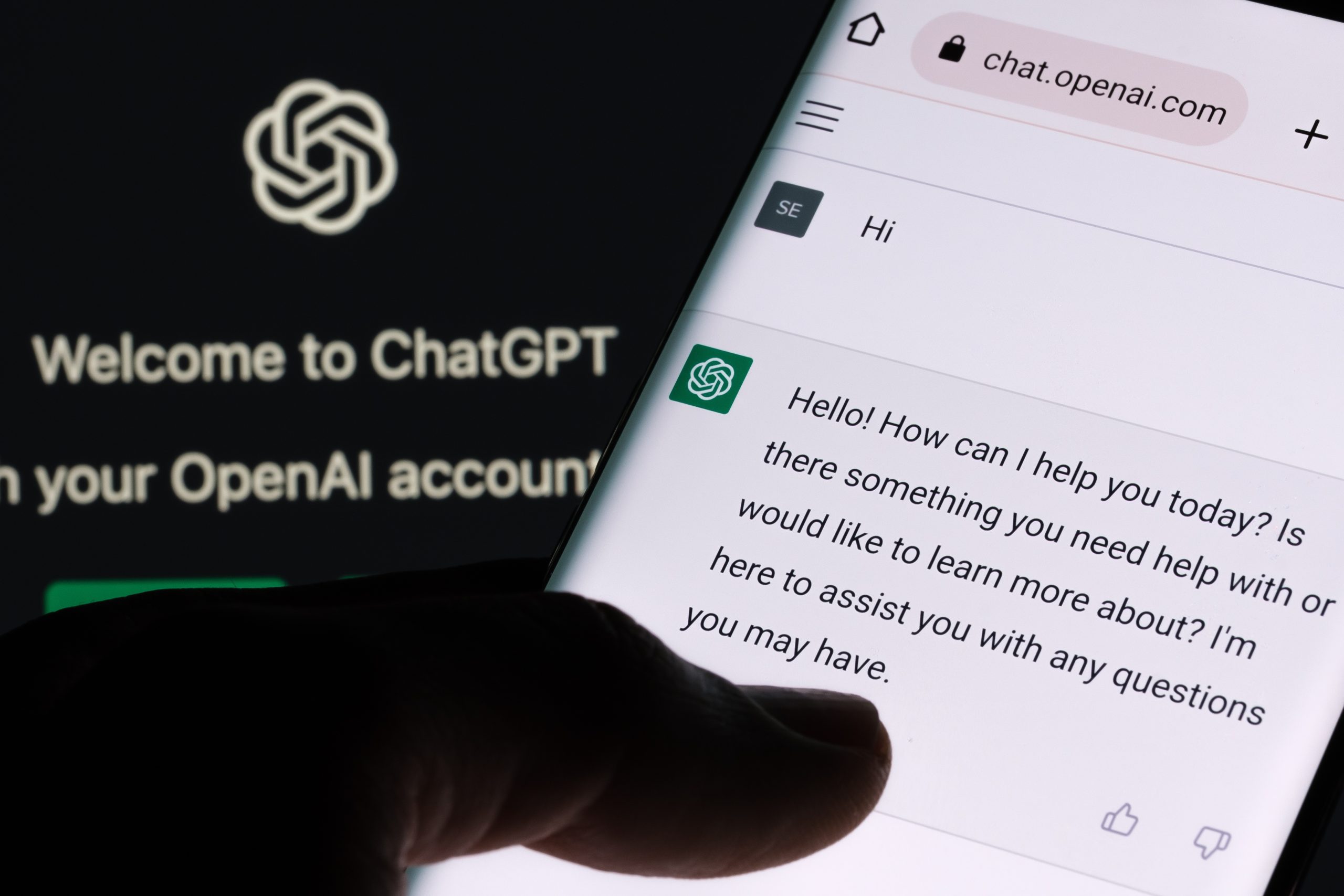 Many Americans with serious illness receive health care that is mismatched with their goals and priorities. This gap between an individual’s priorities and the medical treatment they receive, stands at the center of a network of problems with far-reaching consequences that involve the patient, the patient’s family and caregivers, health care providers, health care systems, and national spending on health care.For many people, serious illness and dying may seem to be an intrinsically and unavoidably terrible and terrifying experience. However, for patients with serious illness, in many cases the process of illness and death is one that they expect, can accept, and are willing to prepare and discuss in depth. Patients often experience the most suffering and anguish because their preferences for care are never elicited, documented, or honored; their families and caregivers struggle with decisions that leave them with regret and post-traumatic distress; clinicians experience moral distress and burnout; and healthcare systems face increasing utilization with suboptimal outcomes. Nationally, this results in health care expenses in the United States that surpass every other country in the world as a proportion of gross national product (GDP), even as our nation lags in quality measures.Clinicians and patients are not having enough serious illness conversations.To improve medical care to make it more concordant with patient goals requires multiple interventions. A key component is the ability of physicians, nurses, and other clinicians to communicate effectively about values and goals, and then to translate those values into clinical care plans.Patients want to be heard, feel cared for, and share with their clinicians what is most important when faced with serious illness. Healthcare professionals agree: 99 percent of clinicians studied nationally say they should be having serious illness conversations with patients (Fulmer et al., 2018). However, only 14 percent of clinicians have these conversations and 46 percent of clinicians reported they were uncertain of what to say (Fulmer et al., 2018).Most practicing clinicians have never received effective communication training, and as a result, data shows that clinicians often fail to elicit values from patients, miss empathic cues that are critical for establishing patient trust, and are unable to connect patient values to a medical action plan. Inadequate clinician communication skills impact not only patients from intake to discharge but the entire health ecosystem.Many clinicians do not receive adequate training in serious illness conversations.Reasons clinicians cite for this “conversation gap” include lack of time, worry about provoking emotions, fear of prognostication, uncertainty about what to say, and lack of formal training. In fact, only 29 percent of clinicians reported having formal training conducting these conversations (Fulmer et al., 2018).Communication skills training improves clinicians’ likelihood and ability to have serious illness conversations.Serious illness conversations improve goal-concordance, care experience, and patient quality of life and outcomes. When goals of care and advanced care planning conversations happen, studies report higher patient-rated quality of life, longer survival, fewer depressive symptoms, and improved spiritual wellbeing (Temel et al., 2010; Bakitas, Lyons & Hegel, 2009; Rogers et al., 2017). Serious illness communication interventions positively impact health care systems as well, including shorter lengths of stay, lower rates of 30-day readmissions, reduced acute care utilization, and earlier hospice enrollment (Norton et al., 2017; Temel et al., 2010; Sharma, Freeman, Zhang & Goodwin, 2009). Communication training has a positive effect on clinician burnout as well. 60 percent of physicians who report having specific training in end-of-life discussions say they rarely feel unsure about what to say when having conversations about end-of-life care and 46 percent of physicians are more likely (than those who have not) to find those conversations rewarding (Fulmer et al., 2018).Effective, empathic and honest conversations between a clinician, patient and their family are the cornerstones of patient-centered care. Just as performing surgery is a learned skill, the same is true for communicating with patients and their families experiencing serious illness. Communication skills training programs can and do bridge the costly gaps between patients, their families, and their healthcare teams. With better communication there is a future in which every seriously ill patient will be surrounded by clinicians who can speak about what matters most and match care to values.References1. Fulmer T, Escobedo M, Berman A, Koren MJ, Hernández S, Hult A. Physicians’ Views on Advance Care Planning and End-of-Life Care Conversations. J Am Geriatr Soc. 2018;66(6):1201-1205. https://doi.org/10.1111/jgs.153742. Temel JS, Greer JA, Muzikansky A, et al. Early palliative care for patients with metastatic nonsmall-cell lung cancer. The New England Journal of Medicine. 2010;363:733-742. https://doi.org/10.1056/NEJMoa10006783. Bakitas M, Lyons KD, Hegel MT, et al. Effects of a Palliative Care Intervention on Clinical Outcomes in Patients With Advanced Cancer: The Project ENABLE II Randomized Controlled Trial. JAMA. 2009;302(7):741–749. https://doi.org/10.1001/jama.2009.11984. Rogers JG, Patel CB, Mentz RJ, et al. Palliative Care in Heart Failure: The PAL-HF Randomized, Controlled Clinical Trial. J Am Coll Cardiol. 2017;70(3):331-341. https://doi.org/10.1016/j.jacc.2017.05.0305. Norton SA, Hogan LA, Holloway RG, Temkin-Greener H, Buckley MJ, Quill TE. Proactive palliative care in the medical intensive care unit: effects on length of stay for selected high-risk patients. Critical Care Medicine. 2007;35:1530-5. https://doi.org/10.1097/01.CCM.0000266533.06543.0C6. Temel JS, Greer JA, Muzikansky A, et al. Early palliative care for patients with metastatic nonsmall-cell lung cancer. The New England Journal of Medicine. 2010;363:733-42. https://doi.org/10.1056/NEJMoa10006787. Sharma G, Freeman J, Zhang D, Goodwin JS. Continuity of care and intensive care unit use at the end of life. JAMA. 2009;169:81-6. https://doi.org/10.1001/archinternmed.2008.514For more research regarding the effects of communication skills training in healthcare, please visit: https://www.vitaltalk.org/evidence/
Many Americans with serious illness receive health care that is mismatched with their goals and priorities. This gap between an individual’s priorities and the medical treatment they receive, stands at the center of a network of problems with far-reaching consequences that involve the patient, the patient’s family and caregivers, health care providers, health care systems, and national spending on health care.For many people, serious illness and dying may seem to be an intrinsically and unavoidably terrible and terrifying experience. However, for patients with serious illness, in many cases the process of illness and death is one that they expect, can accept, and are willing to prepare and discuss in depth. Patients often experience the most suffering and anguish because their preferences for care are never elicited, documented, or honored; their families and caregivers struggle with decisions that leave them with regret and post-traumatic distress; clinicians experience moral distress and burnout; and healthcare systems face increasing utilization with suboptimal outcomes. Nationally, this results in health care expenses in the United States that surpass every other country in the world as a proportion of gross national product (GDP), even as our nation lags in quality measures.Clinicians and patients are not having enough serious illness conversations.To improve medical care to make it more concordant with patient goals requires multiple interventions. A key component is the ability of physicians, nurses, and other clinicians to communicate effectively about values and goals, and then to translate those values into clinical care plans.Patients want to be heard, feel cared for, and share with their clinicians what is most important when faced with serious illness. Healthcare professionals agree: 99 percent of clinicians studied nationally say they should be having serious illness conversations with patients (Fulmer et al., 2018). However, only 14 percent of clinicians have these conversations and 46 percent of clinicians reported they were uncertain of what to say (Fulmer et al., 2018).Most practicing clinicians have never received effective communication training, and as a result, data shows that clinicians often fail to elicit values from patients, miss empathic cues that are critical for establishing patient trust, and are unable to connect patient values to a medical action plan. Inadequate clinician communication skills impact not only patients from intake to discharge but the entire health ecosystem.Many clinicians do not receive adequate training in serious illness conversations.Reasons clinicians cite for this “conversation gap” include lack of time, worry about provoking emotions, fear of prognostication, uncertainty about what to say, and lack of formal training. In fact, only 29 percent of clinicians reported having formal training conducting these conversations (Fulmer et al., 2018).Communication skills training improves clinicians’ likelihood and ability to have serious illness conversations.Serious illness conversations improve goal-concordance, care experience, and patient quality of life and outcomes. When goals of care and advanced care planning conversations happen, studies report higher patient-rated quality of life, longer survival, fewer depressive symptoms, and improved spiritual wellbeing (Temel et al., 2010; Bakitas, Lyons & Hegel, 2009; Rogers et al., 2017). Serious illness communication interventions positively impact health care systems as well, including shorter lengths of stay, lower rates of 30-day readmissions, reduced acute care utilization, and earlier hospice enrollment (Norton et al., 2017; Temel et al., 2010; Sharma, Freeman, Zhang & Goodwin, 2009). Communication training has a positive effect on clinician burnout as well. 60 percent of physicians who report having specific training in end-of-life discussions say they rarely feel unsure about what to say when having conversations about end-of-life care and 46 percent of physicians are more likely (than those who have not) to find those conversations rewarding (Fulmer et al., 2018).Effective, empathic and honest conversations between a clinician, patient and their family are the cornerstones of patient-centered care. Just as performing surgery is a learned skill, the same is true for communicating with patients and their families experiencing serious illness. Communication skills training programs can and do bridge the costly gaps between patients, their families, and their healthcare teams. With better communication there is a future in which every seriously ill patient will be surrounded by clinicians who can speak about what matters most and match care to values.References1. Fulmer T, Escobedo M, Berman A, Koren MJ, Hernández S, Hult A. Physicians’ Views on Advance Care Planning and End-of-Life Care Conversations. J Am Geriatr Soc. 2018;66(6):1201-1205. https://doi.org/10.1111/jgs.153742. Temel JS, Greer JA, Muzikansky A, et al. Early palliative care for patients with metastatic nonsmall-cell lung cancer. The New England Journal of Medicine. 2010;363:733-742. https://doi.org/10.1056/NEJMoa10006783. Bakitas M, Lyons KD, Hegel MT, et al. Effects of a Palliative Care Intervention on Clinical Outcomes in Patients With Advanced Cancer: The Project ENABLE II Randomized Controlled Trial. JAMA. 2009;302(7):741–749. https://doi.org/10.1001/jama.2009.11984. Rogers JG, Patel CB, Mentz RJ, et al. Palliative Care in Heart Failure: The PAL-HF Randomized, Controlled Clinical Trial. J Am Coll Cardiol. 2017;70(3):331-341. https://doi.org/10.1016/j.jacc.2017.05.0305. Norton SA, Hogan LA, Holloway RG, Temkin-Greener H, Buckley MJ, Quill TE. Proactive palliative care in the medical intensive care unit: effects on length of stay for selected high-risk patients. Critical Care Medicine. 2007;35:1530-5. https://doi.org/10.1097/01.CCM.0000266533.06543.0C6. Temel JS, Greer JA, Muzikansky A, et al. Early palliative care for patients with metastatic nonsmall-cell lung cancer. The New England Journal of Medicine. 2010;363:733-42. https://doi.org/10.1056/NEJMoa10006787. Sharma G, Freeman J, Zhang D, Goodwin JS. Continuity of care and intensive care unit use at the end of life. JAMA. 2009;169:81-6. https://doi.org/10.1001/archinternmed.2008.514For more research regarding the effects of communication skills training in healthcare, please visit: https://www.vitaltalk.org/evidence/
 Tessie October, M.D., M.P.H., is a board-certified physician in pediatrics, pediatric critical care and palliative and hospice medicine. She blends expertise from these three areas to transform the communication healthcare experience for patients with serious illness and their families. Dr. October currently serves as a board member for VitalTalk.
...
Tessie October, M.D., M.P.H., is a board-certified physician in pediatrics, pediatric critical care and palliative and hospice medicine. She blends expertise from these three areas to transform the communication healthcare experience for patients with serious illness and their families. Dr. October currently serves as a board member for VitalTalk.
...
Read More...

 PRovoke Media examined the key challenges facing China’s PR industry.Interviews with 125 marketers and 70 senior PR agency professionals were conducted.Key findings include:1.) In 2022, 46% of planned marketing campaigns had to stop and shift to online platforms, as compared to 29% in 2020.2.) 57% of departments experienced integration in 2022— an almost 20% spike from just two years ago.3.) Almost 30% of firms have merged PR and marketing departments.4.) The report found two key takeaways for PR agencies to stay competitive and deliver relevant value to clients:— Corporate social responsibility demands a greater ability in high-level strategic thinking and planning.— PR agencies can differentiate themselves by highlighting service capabilities, and competitiveness through innovation, as well as resource acquisition.Find the original report here.
...
PRovoke Media examined the key challenges facing China’s PR industry.Interviews with 125 marketers and 70 senior PR agency professionals were conducted.Key findings include:1.) In 2022, 46% of planned marketing campaigns had to stop and shift to online platforms, as compared to 29% in 2020.2.) 57% of departments experienced integration in 2022— an almost 20% spike from just two years ago.3.) Almost 30% of firms have merged PR and marketing departments.4.) The report found two key takeaways for PR agencies to stay competitive and deliver relevant value to clients:— Corporate social responsibility demands a greater ability in high-level strategic thinking and planning.— PR agencies can differentiate themselves by highlighting service capabilities, and competitiveness through innovation, as well as resource acquisition.Find the original report here.
... 
 Seth Arenstein is a freelance writer and former editor of PRNEWS.
...
Seth Arenstein is a freelance writer and former editor of PRNEWS.
... 




 Tessie October, M.D., M.P.H., is a board-certified physician in pediatrics, pediatric critical care and palliative and hospice medicine. She blends expertise from these three areas to transform the communication healthcare experience for patients with serious illness and their families. Dr. October currently serves as a board member for VitalTalk.
...
Tessie October, M.D., M.P.H., is a board-certified physician in pediatrics, pediatric critical care and palliative and hospice medicine. She blends expertise from these three areas to transform the communication healthcare experience for patients with serious illness and their families. Dr. October currently serves as a board member for VitalTalk.
... 

 ChatGPT has created awe and concern in the communication industry since its introduction in November 2022. Part of the professional worry is that generative artificial intelligence (AI), such as ChatGPT, can lead to a diminishment of human writing, an automation of content, and, perhaps most concerning, an elimination of professionals. The awe of this new reality is that applications such as ChatGPT are smart….well, smart enough to cause a real impact on the PR profession. Jobs may be eliminated or modified permanently to embrace this new technological reality.Despite the operational and philosophical implications of generative AI, the issues surrounding this new technology present some real questions, particularly legal questions. This blog addresses three major areas PR practitioners need to be aware of in using generative AI: privacy, intellectual property, and bias. From this analysis, this article attempts to anticipate the evolving future of non-human content production in the always-prescient field of public relations.Does AI create privacy risks? Yes, especially when users disclose proprietary information.Generative AI applications like ChatGPT utilize user inquiries to help with crafting content. There is a growing concern over the privacy of users who are providing large quantities of data to facilitate a better user experience. This has implications for the user and the user’s employer. There is a potential for a user to disclose proprietary information to a generative AI application, which could include intellectually protected information, such as trade secrets. Because generative AI can review content as well as create it, there is the opportunity for professionals to input large amounts of proprietary content that get saved into the AI application. As such, client confidence may be breached and proprietary content may suddenly be available to the public, free of charge.What are the IP issues of AI-generated content? Potentially…a lot.Content generated by generative AI is culled from innumerable sources that are input into the AI system. That poses two scenarios of potential infringement. The first is an unintentional infringement of other owner’s content that is used to generate the new AI-produced text. The second is infringement created by separate duplicative requests to the language generation model. This issue is compounded with other generative AI applications that can produce artistic content and images. While lack of intent may mitigate damages in a copyright claim, it does not absolve the infringer from legal responsibility. Because of that, unintentional infringement may proliferate in industries that widely use AI for content creation.A more complex issue concerns the copyright protection afforded to AI. Because AI-produced content is not human-generated, it arguably does not have protection under U.S. copyright law. For copyright in the U.S., there are two basic requirements 1) originality of the work and 2) fixation in a tangible medium. Because AI produces the work without human input, the basic requirement of copyright is absent making AI content either unprotected public domain work or a derivative work of protected copyrighted content. This is complicated by the issue of citation, or lack of citations, in AI-generated content. While proper citation is an issue in the arena of plagiarism, the lack of citations can actually create scenarios where otherwise conscientious practitioners unwittingly engage in copyright infringement.The U.S. Copyright Office (USCO) is reluctant to award copyright protection to AI-generated content. However, there is the potential for AI-created content to receive copyright protection if the level of human input reaches a certain threshold. That issue is a matter for the USCO and the courts to continue to examine over the coming years, and its answer may lie in a case-by-case analysis. What is certain is the USCO has made great strides in 2022 toward streamlining the copyright claims process with the Copyright Claims Board, a voluntary board that hears copyright infringement claims that are less than $30,000. 2023 promises to be a year where the USCO may develop more specific approaches to AI-generated content and the threshold of human productivity that results in legal protection.Can AI be biased? In short, yes, but it depends on how you use it.The algorithm that ChatGPT uses is based on a massive quantity of data input into the system. Ultimately the content that is input into the system is subject to the potential biases of those who are inputting the data. The Equal Employment Opportunity Commission (EEOC) has concerns about bias in employment practices generated by AI releasing an agency-wide initiative promoting “algorithmic fairness” in 2021. In January 2023, the EEOC held a panel presentation on AI and discrimination calling the use of AI and automated systems a “new civil rights frontier.” Outside of employment bias, there is also the concern of what bias can occur unintentionally in content. Those using tools like ChatGPT should verify and proofread content carefully to ensure that the material is congruent with ethical and legal regulations with regard to discrimination and diversity, equity, and inclusion (DEI) initiatives.How will legal AI issues affect PR practice? It depends on the courts and PR practitioners.As AI continues to evolve and the use of generative AI continues, there are more novel legal questions that may arise. For instance, if AI creates two identical texts, can one user sue the other for copyright infringement? Could AI-produced content contain defamatory statements, and, if so, who would be held legally responsible, the AI or the individual who utilized it? Right now the answers to those questions are murky at best, and are the types of questions courts may be grappling with for the next few years.For public relations practitioners, generative AI applications provide a lot of promise because they can improve communication content and serve as a personal editor, proofreader, and sounding board. However, these applications present novel challenges not seen before in the communication and legal sphere. Because of the uniqueness of this new technology, PR practitioners should be more deliberate and reflective in their use of AI. There are so many potential pitfalls that are unintentional, particularly around IP infringement, that PR practitioners need to make informed decisions rooted in verifying content ownership and accuracy. Because this is an evolving legal landscape for AI, practitioners should also be more vigilant in keeping up with legal trends in this quickly evolving field.One thing that is fairly certain in the uncertain world AI creates is that generative AI is here to stay. Just try logging on to ChatGPT and you may get a notice to come back later because it’s at capacity. Technological innovation doesn’t go backward, and public relations practice has already acknowledged that ChatGPT and other AI programs like it can be transformative to the industry.
ChatGPT has created awe and concern in the communication industry since its introduction in November 2022. Part of the professional worry is that generative artificial intelligence (AI), such as ChatGPT, can lead to a diminishment of human writing, an automation of content, and, perhaps most concerning, an elimination of professionals. The awe of this new reality is that applications such as ChatGPT are smart….well, smart enough to cause a real impact on the PR profession. Jobs may be eliminated or modified permanently to embrace this new technological reality.Despite the operational and philosophical implications of generative AI, the issues surrounding this new technology present some real questions, particularly legal questions. This blog addresses three major areas PR practitioners need to be aware of in using generative AI: privacy, intellectual property, and bias. From this analysis, this article attempts to anticipate the evolving future of non-human content production in the always-prescient field of public relations.Does AI create privacy risks? Yes, especially when users disclose proprietary information.Generative AI applications like ChatGPT utilize user inquiries to help with crafting content. There is a growing concern over the privacy of users who are providing large quantities of data to facilitate a better user experience. This has implications for the user and the user’s employer. There is a potential for a user to disclose proprietary information to a generative AI application, which could include intellectually protected information, such as trade secrets. Because generative AI can review content as well as create it, there is the opportunity for professionals to input large amounts of proprietary content that get saved into the AI application. As such, client confidence may be breached and proprietary content may suddenly be available to the public, free of charge.What are the IP issues of AI-generated content? Potentially…a lot.Content generated by generative AI is culled from innumerable sources that are input into the AI system. That poses two scenarios of potential infringement. The first is an unintentional infringement of other owner’s content that is used to generate the new AI-produced text. The second is infringement created by separate duplicative requests to the language generation model. This issue is compounded with other generative AI applications that can produce artistic content and images. While lack of intent may mitigate damages in a copyright claim, it does not absolve the infringer from legal responsibility. Because of that, unintentional infringement may proliferate in industries that widely use AI for content creation.A more complex issue concerns the copyright protection afforded to AI. Because AI-produced content is not human-generated, it arguably does not have protection under U.S. copyright law. For copyright in the U.S., there are two basic requirements 1) originality of the work and 2) fixation in a tangible medium. Because AI produces the work without human input, the basic requirement of copyright is absent making AI content either unprotected public domain work or a derivative work of protected copyrighted content. This is complicated by the issue of citation, or lack of citations, in AI-generated content. While proper citation is an issue in the arena of plagiarism, the lack of citations can actually create scenarios where otherwise conscientious practitioners unwittingly engage in copyright infringement.The U.S. Copyright Office (USCO) is reluctant to award copyright protection to AI-generated content. However, there is the potential for AI-created content to receive copyright protection if the level of human input reaches a certain threshold. That issue is a matter for the USCO and the courts to continue to examine over the coming years, and its answer may lie in a case-by-case analysis. What is certain is the USCO has made great strides in 2022 toward streamlining the copyright claims process with the Copyright Claims Board, a voluntary board that hears copyright infringement claims that are less than $30,000. 2023 promises to be a year where the USCO may develop more specific approaches to AI-generated content and the threshold of human productivity that results in legal protection.Can AI be biased? In short, yes, but it depends on how you use it.The algorithm that ChatGPT uses is based on a massive quantity of data input into the system. Ultimately the content that is input into the system is subject to the potential biases of those who are inputting the data. The Equal Employment Opportunity Commission (EEOC) has concerns about bias in employment practices generated by AI releasing an agency-wide initiative promoting “algorithmic fairness” in 2021. In January 2023, the EEOC held a panel presentation on AI and discrimination calling the use of AI and automated systems a “new civil rights frontier.” Outside of employment bias, there is also the concern of what bias can occur unintentionally in content. Those using tools like ChatGPT should verify and proofread content carefully to ensure that the material is congruent with ethical and legal regulations with regard to discrimination and diversity, equity, and inclusion (DEI) initiatives.How will legal AI issues affect PR practice? It depends on the courts and PR practitioners.As AI continues to evolve and the use of generative AI continues, there are more novel legal questions that may arise. For instance, if AI creates two identical texts, can one user sue the other for copyright infringement? Could AI-produced content contain defamatory statements, and, if so, who would be held legally responsible, the AI or the individual who utilized it? Right now the answers to those questions are murky at best, and are the types of questions courts may be grappling with for the next few years.For public relations practitioners, generative AI applications provide a lot of promise because they can improve communication content and serve as a personal editor, proofreader, and sounding board. However, these applications present novel challenges not seen before in the communication and legal sphere. Because of the uniqueness of this new technology, PR practitioners should be more deliberate and reflective in their use of AI. There are so many potential pitfalls that are unintentional, particularly around IP infringement, that PR practitioners need to make informed decisions rooted in verifying content ownership and accuracy. Because this is an evolving legal landscape for AI, practitioners should also be more vigilant in keeping up with legal trends in this quickly evolving field.One thing that is fairly certain in the uncertain world AI creates is that generative AI is here to stay. Just try logging on to ChatGPT and you may get a notice to come back later because it’s at capacity. Technological innovation doesn’t go backward, and public relations practice has already acknowledged that ChatGPT and other AI programs like it can be transformative to the industry.
 Cayce Myers, Ph.D., LL.M., J.D., APR is the Legal Research Editor for the Institute for Public Relations. He is the Director of Graduate Studies and Associate Professor at the Virginia Tech School of Communication.
...
Cayce Myers, Ph.D., LL.M., J.D., APR is the Legal Research Editor for the Institute for Public Relations. He is the Director of Graduate Studies and Associate Professor at the Virginia Tech School of Communication.
... 